
Unlock the US Election Countdown newsletter for free
The stories that matter on money and politics in the race for the White House
The Golden State is losing its lustre.
Since 2019, over 200 companies have left California for greener pastures — the most of any American state, by far — according to announcements tracked by fDi Markets, an FT service.
Some big names have gone. Chevron, Hewlett-Packard, Palantir, and Charles Schwab have all made the move elsewhere.
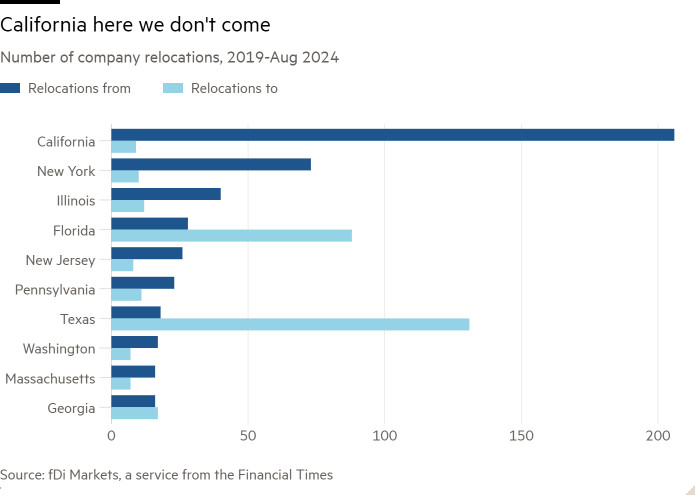
At the same time, few companies are relocating to California. What explains the exodus, and lack of arrivals?
Elon Musk, in part, blames the “woke mind virus” for shifting his ventures — SpaceX and Tesla — out of the liberal state. The less hyperbolic and more realistic reason cited by businesses is the rising burdens upon enterprise.
Start with the basics. California’s tax rates aren’t exactly competitive. And, according to data from George Mason University’s Mercatus Center, it is the most regulated state in the country. As of 2023, the California Code of Regulations contains over 400k restrictions and 23mn words, the bulk of which cover “industry, commerce and development”.
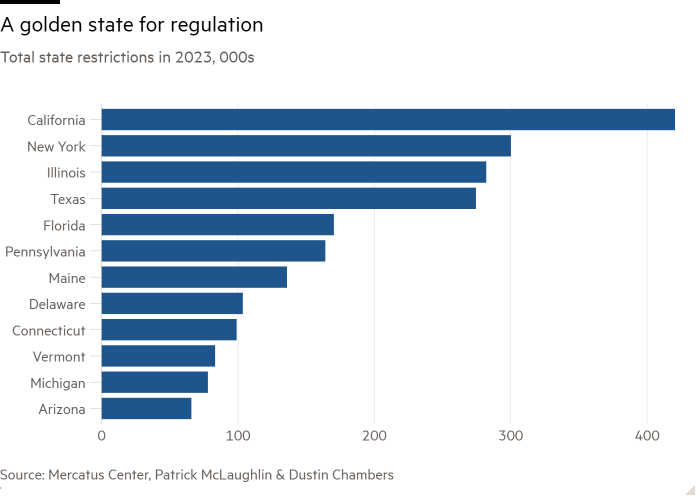
So it’s no surprise that two of the biggest beneficiaries from this shift are Texas and Florida — which offer looser regulations and more competitive tax rates.
But the biggest motive for companies relocating within the US, according to an fDi markets survey, is actually talent. It’s a narrative that would seem to jar with the Silicon Valley’s status as a hub for high-skilled techies.
Well. California also has a big problem with outmigration. In the 2010s, it experienced a net loss of 1.3mn residents. That has had a knock-on impact on state coffers (its budget deficit is estimated at around a whopping $45bn).
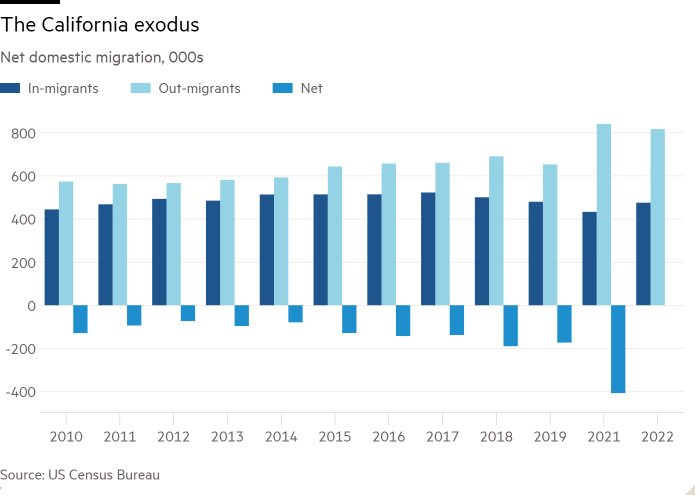
It’s not just low-income households moving out. One would assume that tech types would be tied to California’s cluster of coders, venture capitalists, and artisanal coffee shops. But employment in IT, business services and finance has been falling in the aftermath of the pandemic. California’s share of tech jobs across America has also dropped, although this may in part reflect its relative maturity as other areas experience new growth.
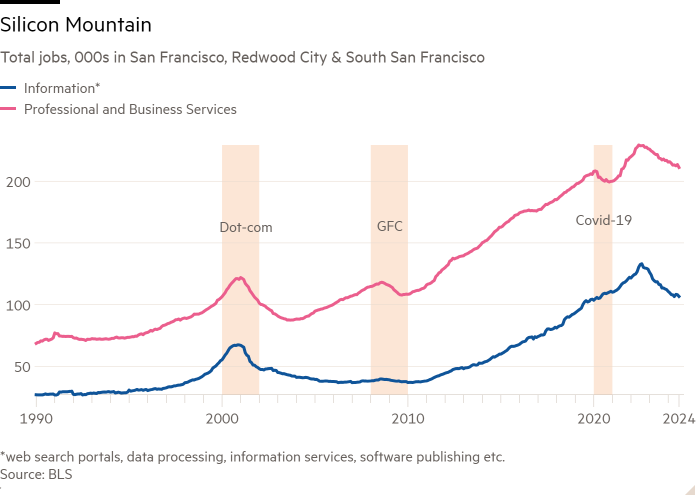
People are leaving, in part, because companies are. But California is also becoming a harder place to make a living. Housing affordability is a particular problem. For measure, in San Francisco’s Bay Area, median home prices recently hit $2mn.
Many again point the finger at regulation. Density restrictions, high land costs, environmental laws and NIMBYism are all blamed for making permitting processes frustratingly long. That peeves off commercial developers, and pushes-up residential prices, which scare workers away. Work-from-home culture has also meant many tech firms have downsized offices, and employees seek bigger, but affordable homes.
Above all. Despite its, many, draws — sun-soaked beaches, Silicon Valley, Disney World — if living gets tough, people up sticks.
And things are tough: California’s Misery Index — the sum of the annual inflation and unemployment rate — has been at a premium to the US-wide measure since the start of the pandemic.
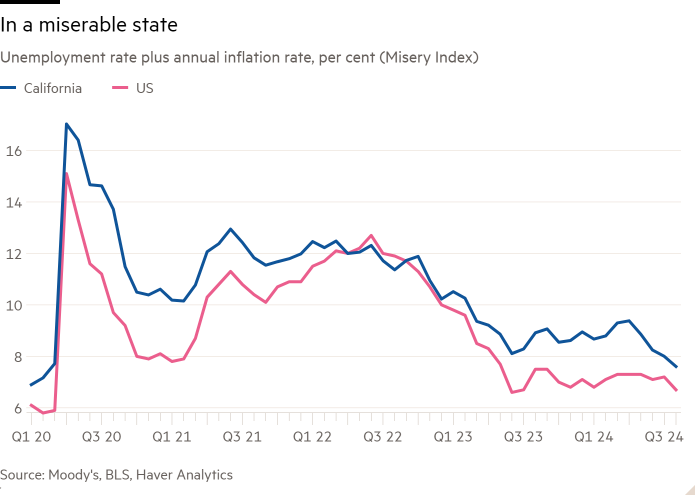
Despite all this, the Golden State remains America’s largest economy (and in nominal terms, the world’s fifth-largest economy). Silicon Valley remains the world’s tech hub. The trends, however, do not look great. Other states are getting shinier in their own right. California can no longer afford to rest on its laurels.